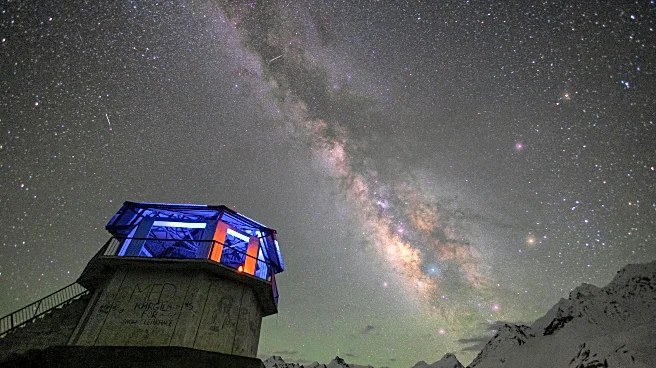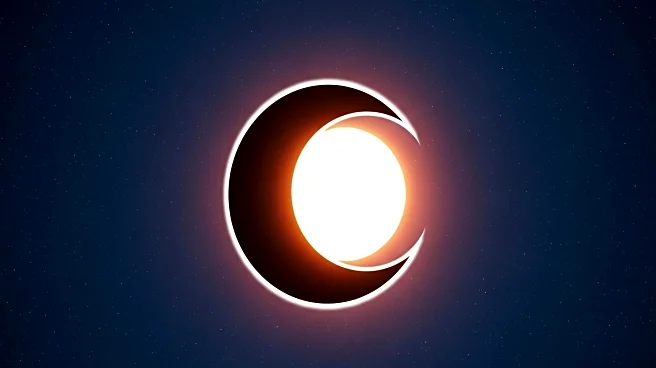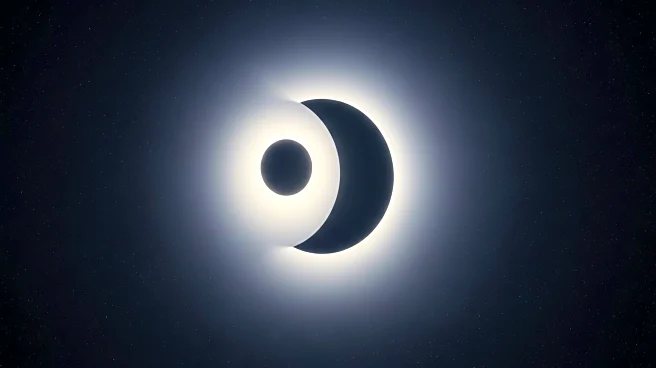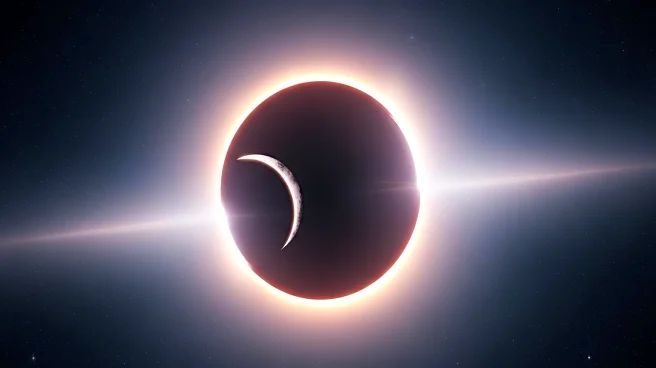What's Happening?
On September 21, 2025, a partial solar eclipse will occur, known as the 'equinox eclipse' due to its proximity to the autumnal equinox. This celestial event will be visible primarily from New Zealand, Antarctica, and parts of the South Pacific. The eclipse will feature 86% lunar coverage of the Sun, offering spectacular views from the Southern Hemisphere. This marks the last solar eclipse of the year, limiting viewing opportunities for most of the world.
Why It's Important?
Solar eclipses are significant astronomical events that draw global attention and interest. They provide unique opportunities for scientific study and public engagement with astronomy. The 'equinox eclipse' occurring near the autumnal equinox adds to its significance, highlighting the interplay between celestial events and seasonal changes. While the eclipse is not visible from the U.S., it underscores the importance of international collaboration in astronomy and the need for accessible viewing options through technology.
What's Next?
For those unable to view the eclipse directly, scientific organizations and media outlets may provide live streams and coverage, allowing global audiences to experience the event virtually. The eclipse may inspire educational initiatives and public interest in astronomy, encouraging further exploration of celestial phenomena. As the last solar eclipse of the year, it serves as a reminder of the cyclical nature of astronomical events and the anticipation for future eclipses.
Beyond the Headlines
The partial solar eclipse highlights the importance of preserving dark skies and reducing light pollution to maintain the ability to observe celestial events. It also emphasizes the role of technology in making astronomical phenomena accessible to a global audience. The eclipse's occurrence near the equinox underscores the interconnectedness of celestial events and seasonal changes, offering opportunities for cultural reflection and scientific study.












